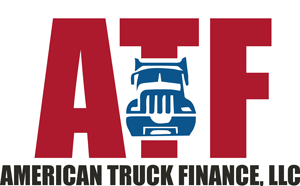Driving Success: Effective Strategies to Enhance Cash Flow in the Trucking Industry

In the dynamic realm of the trucking industry, maintaining a healthy cash flow is critical for sustaining operations, meeting expenses, and driving business growth. Whether you're an independent owner-operator or managing a fleet of trucks, optimizing cash flow is key to financial stability and success. Here, we explore several impactful strategies tailored specifically for the trucking sector to bolster cash flow effectively.
1. Efficient Route Planning and Load Optimization:
- Utilize Technology: Employ route optimization software to plan cost-effective routes, minimize empty miles, and maximize payload capacity. Efficient routing reduces fuel expenses and maximizes revenue per mile.
2. Negotiate Favorable Payment Terms:
- Early Payment Incentives: Offer discounts to clients or shippers for early payments to incentivize prompt settlement of invoices.
- Freight Factoring Services: Consider using freight factoring services to receive immediate cash for invoices, mitigating delays in receiving payments.
3. Focus on Fuel Efficiency and Maintenance:
- Regular Maintenance: Maintain trucks regularly to prevent breakdowns, which can lead to costly repairs and downtime.
- Invest in Fuel-Efficient Technology: Adopt fuel-saving technologies and practices to reduce fuel expenses, a significant cost in the trucking industry.
4. Leverage Technology for Expense Management:
- Expense Tracking Software: Implement software to track and manage various expenses, including fuel, tolls, maintenance, and other operational costs.
- Telematics Systems: Utilize telematics to monitor driver behavior, optimize fuel consumption, and reduce unnecessary idling.
5. Consider Equipment Financing and Leasing:
- Financing Options: Explore financing or leasing options for trucks and equipment to spread out costs and free up immediate cash flow.
- Choose Wisely: Evaluate different financing plans to select the one that best suits your business's financial situation and long-term goals.
6. Streamline Administrative Processes and Overhead Costs:
- Automation: Automate administrative tasks to reduce paperwork and processing time, freeing up resources for other critical functions.
- Contract Review: Review contracts with suppliers, vendors, and service providers to negotiate cost savings without compromising quality.
7. Cultivate Strong Relationships and Communication:
- Build Partnerships: Foster good relationships with clients, shippers, and suppliers to ensure smooth operations and potentially negotiate better terms.
- Communication: Maintain open communication with clients to understand their needs and anticipate changes in demand or potential payment delays.
8. Diversify Services and Expand Market Reach:
- Explore New Markets: Consider diversifying services or expanding into new markets to broaden revenue streams and reduce dependence on specific clients or industries.
- Specialized Services: Explore opportunities in specialized freight or niche markets to tap into less volatile sectors.
9. Implement Cash Flow Forecasting and Budgeting:
- Detailed Planning: Develop accurate cash flow forecasts and budgets to anticipate income and expenses, enabling better financial planning and management.
- Regular Review: Regularly review and adjust forecasts based on market trends and business performance
10. Reduce Non-Essential Costs and Idle Time:
- Optimize Schedules: Minimize idle time by optimizing schedules and ensuring efficient loading and unloading processes.
- Cut Unnecessary Costs: Identify and eliminate non-essential expenses that do not significantly contribute to business operations or growth.
Implementing a combination of these strategies, tailored to your trucking business's unique needs and circumstances, can significantly enhance cash flow, bolster financial stability, and position your company for sustained success in the competitive trucking industry. By prioritizing efficient operations, prudent financial management, and strategic decision-making, businesses can navigate challenges and capitalize on opportunities to thrive in the ever-evolving transportation landscape.










